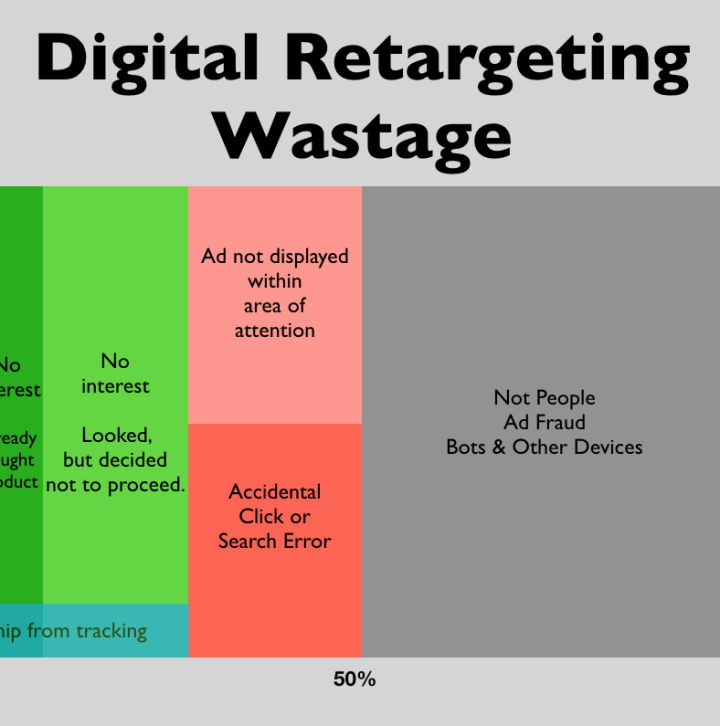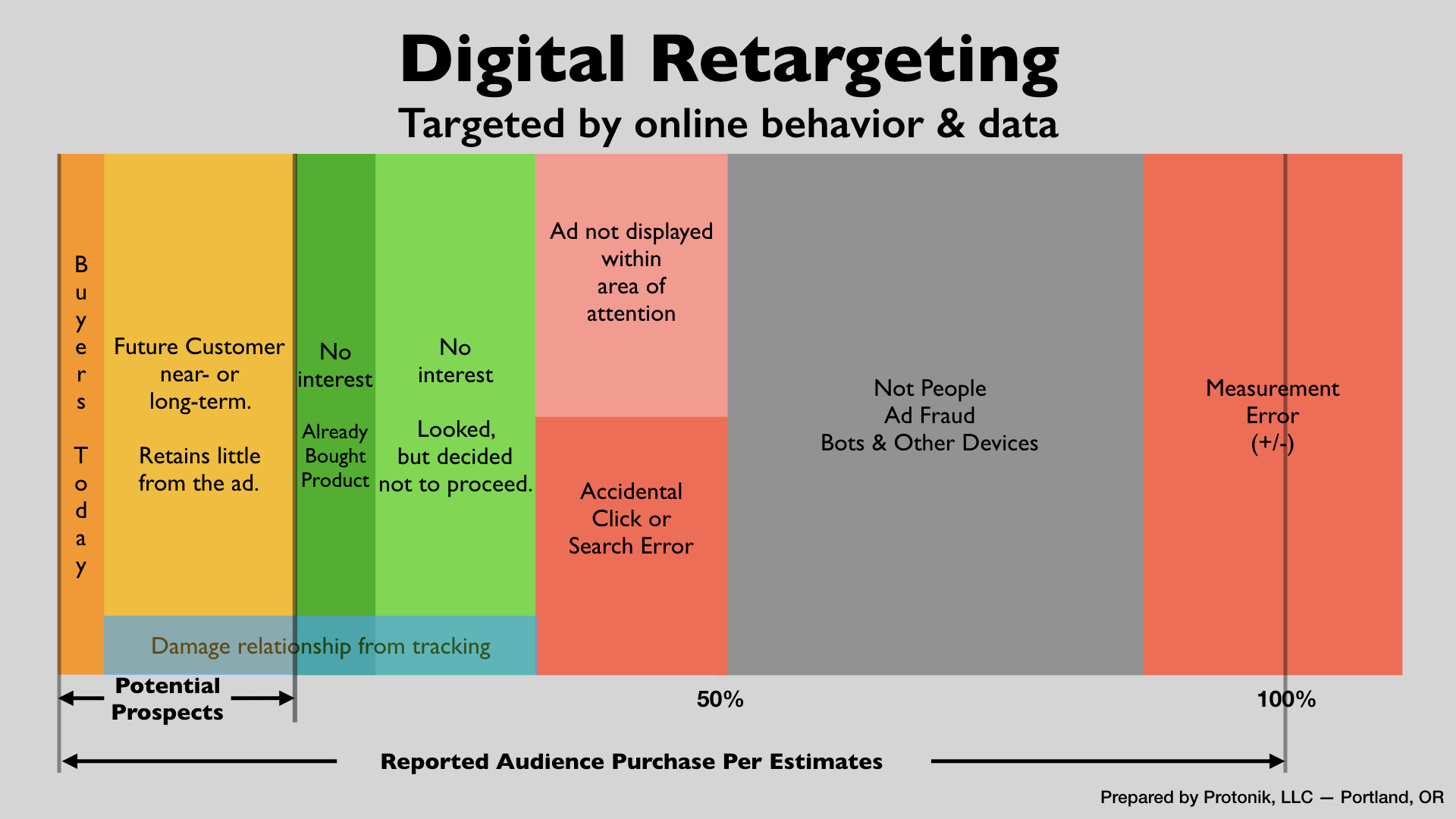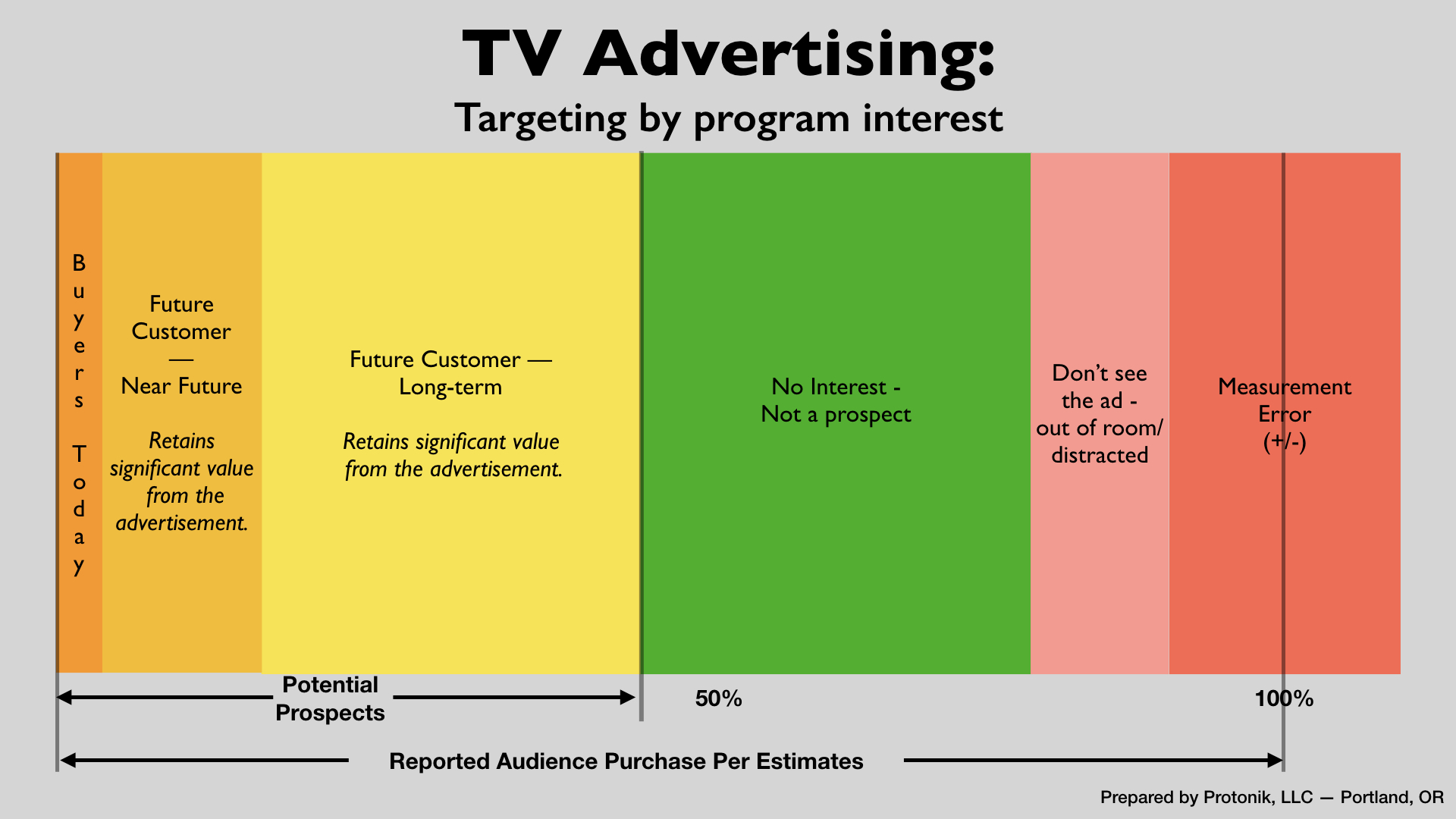
The Incredible Waste of Re-targeted Ads

Suppliers of online advertising have made all range of claims over the past 10 years about how “retargeting” will deliver advertising “precisely” to consumers who care. The power of these claims rests on two theories:
- That retargeting is more “personalized”. The theory being that it delivers ads that are relevant to the individual who sees them.
- That retargeting avoids wastage — wastage that is common in traditional media (or so we’re told). This theory relates to the first – suggesting that tracking individuals ensures your ad never gets shown to people who aren’t interested in it.
In a recent post, Gareth Price does a very nice job analyzing the personalization fad. So I’ll ignore that part of the argument for the moment.
Let me, instead, look at the issue of waste. It’s not surprising that this argument is fully wrong. But let’s walk it through with two charts breaking down the “audience” an ad is served to – one for retargeted ads another for spots on TV.
The charts do NO attempt to look at cost per click or impression or any other metric. They are, instead, WAGs (wild assed guesses) at what’s happening. What I’m hoping to establish are important categories of wastage involved with digital retargeting and to compare that with wastage in TV ads.
As WAGs, though, the size of each block of audience is purely a guess and I would love to find data that could help make them more realistic in specific situations or to have people contribute additional categories of waste.
I’ll note a few key points about each chart below.
Some points:
- Digital sales folks give the idea that they know “exactly who” got an ad. This isn’t true.
- Online audience numbers today are estimated – and that’s why both charts have measurement error. How much error can there be?
- Facebook claimed, for example, that they said they could reach 1.7 million more Australian teens than there are teens in Australia. When asked to explain, the response was “we estimate audience”. Ok. TV does too. But that’s NOT what the digital ad sales folks have been saying.
- TV has always had error. And advertisers have full access to measurement methods and data in order to understand the error. In digital, there is no such independence of data.
- Fraud analysis for web based ads suggests that 50% of the “impressions” reported for an advertisement are not human or are advertising fraud.
- There is no equivalent category for TV.
- The audience can miss the ad in both mediums.
- In TV it happens mostly when people aren’t paying attention or left the room.
- With digital, it happens mostly when the ad is barely shown on the page (timing or space) like below the fold barely visible or when it is drowned out by the visual noise on the page.
- Digital ads struggle to create Byron Sharp’s “Mental Availability” because their communication is shallow.
- TV, by contrast, is able to hit consumers with highly memorable ads which expand their knowledge.
- So any digital ads which might reach future customers won’t have much future impact. At least, any impact will be far than TV ads for future customers.
- In a Mark Ritson example, to create a strong diaper brand, potential parents need to know about your brand well before they have a baby or you’ll have no brand strength when it’s needed. Grandparents also need to know about brand as well as caregivers.
- Retargeting won’t find those a diaper brand needs to reach — focusing on “immediately interested” fails the diaper test.
- Retargeting won’t build future brand strength by reaching future prospects AND leaving behind mental availability for your product or brand. By contrast, TV does that quite well.
- Digital retargeting often reaches people just after they bought.
- I wrote about the retargeting theory in a prior post – noting that watching my browsing techniques online, I often make snap decisions so by the time retargeting catches up with me it’s far too late to have an impact.
What should an advertiser do about retargeting? It’s hard to know the answer – because it depends on the individual situation.
My point is only that re-targeting has been wildly over-sold. Some uses of retargeted ads are quite valuable. Yet they are merely one more advertising option — not a goose that lays golden eggs.
©2018 Doug Garnett – All Rights Reserved
Categories: Advertising, Big Data and Technology, Digital/On-line, Uncategorized


